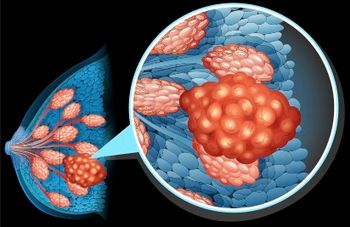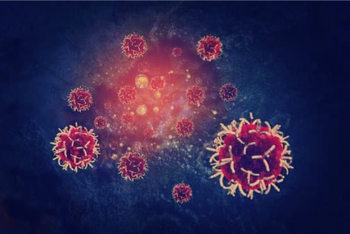
Oncology NEWS International
- Oncology NEWS International Vol 6 No 2
- Volume 6
- Issue 2
Trials Show Efficacy of Toremifene in Advanced Breast Cancer
PALM SPRINGS, Calif--Three major randomized trials comparing the antiestrogens toremifene (Fareston) and tamoxifen (Nolvadex) in patients with advanced breast cancer showed no significant differences in efficacy or side effects profiles, Richard Gams, MD, of Ohio State University, said at the symposium.
PALM SPRINGS, Calif--Three major randomized trials comparing the antiestrogenstoremifene (Fareston) and tamoxifen (Nolvadex) in patients with advancedbreast cancer showed no significant differences in efficacy or side effectsprofiles, Richard Gams, MD, of Ohio State University, said at the symposium.
These pivotal trials, which have served as the basis for the approvalof toremifene in countries around the world, show that the agent at a doseof 60 mg/day is safe and effective for the treatment of advanced breastcancer in postmenopausal women, Dr. Gams said. "Of course," headded, "this begs the question of its use in the adjuvant setting,which is the major use of antiestrogens in breast cancer."
In these studies, equivalence of the two antiestrogens was determinedby the Fleming method, developed by an FDA statistician. By this method,two treatments are considered to be equivalent if the lower boundary ofthe 95% confidence interval measuring the difference in response ratesis 10% or higher.
The studies consisted of a North American trial, which also includedpatients from the United Kingdom, Australia, South Africa, and Mexico;a study from the former Soviet Union (now called the Eastern European trial),whose results were actually audited by the FDA; and the Nordic study, whichincluded patients from Finland, Sweden, Norway, and some Eastern Europeancountries.
In all three trials, patients were ER/PR positive or unknown, postmenopausal(the North American trial also included perimenopausal patients), had goodperformance status, and had not received prior antiestrogens for advanceddisease.
Patients were randomized to receive standard-dose toremifene (60 mg/day),high-dose toremifene (200 or 240 mg/day), or a standard tamoxifen dose(20 or 40 mg/day). The Nordic trial did not include the high-dose toremifenearm. The two primary outcome variables were response rate and time to progression.
'Strikingly Similar Results'
"The most striking thing about the results is that they are similaracross all three trials," Dr. Gams said. The results of the NorthAmerican and Eastern European trials are "virtually identical,"he said. In these two trials, the objective response rate (CR plus PR)was about 20% for both toremifene, 60 mg/day, and tamoxifen. These responserates were lower than anticipated from the literature, although the Nordicstudy did show the anticipated 30% to 40% response rate.
Dr. Gams provided two possible explanations for the lower than expectedresponse rates: First, the studies were very rigorous in their definitionof response. "We insisted that all disease be measured and includedin the assessment, even it if meant repeat imaging," he said.
Second was the inclusion of a fairly substantial number of patientswho had bone-only disease, more so than seen in the typical oncology practice."Bone disease patients, while they may improve symptomatically, oftenhave a much lower objective response rate than patients with soft tissuedisease," he said. The investigators chose not to exclude bone-onlypatients because of the difficulty in recruiting antiestrogen-naïvepatients.
Although the researchers looked for baseline differences in the patientpopulations in the three studies, they could not explain why the Nordicstudy showed higher response rates. "I would simply accept the factthat when you do the same trial over and over, on a statistical basis it'sis highly unlikely that you will come up with exactly the same result eachtime."
Results in the high-dose toremifene arm showed increased side effectsand no significant improvement in response rate, Dr. Gams said, "sowe didn't feel that this was worth pursuing."
The weight of the evidence from all three trials, he said, is that tamoxifenand toremifene provide very similar outcomes, "so we have to lookto the side effects profile or some other reason to make a choice of oneversus the other."
He pointed out that there were no differences between the two drugsin quality of life or improvement in pain. "It is gratifying thatas many as 40% of patients had a reduction in their need for narcotic analgesics,"he said.
In these studies, there were only two cases of endometrial carcinoma,both of which occurred in women who had received tamoxifen. The investigatorsdid not routinely perform endometrial biopsies or otherwise specificallylook for endometrial cancers in these patients.
"Endometrial carcinomas occur fairly infrequently and would notbe the primary reason for making a choice between agents in patients withadvanced breast cancer," he said.
Articles in this issue
almost 29 years ago
NCI Launches Trial of High-Dose Chemo for Advanced Ovarian Canceralmost 29 years ago
'More May Be Less' in Metastatic Cervical Canceralmost 29 years ago
At 10 Years, DCIS Patients' Risk of Breast Cancer Death Is Very Lowalmost 29 years ago
Survey Finds 122 New Anti-HIV Medicines Currently Being Testedalmost 29 years ago
President Clinton Unveils National AIDS Policyalmost 29 years ago
Mammotomy May Reduce Biopsy Sampling ErrorsNewsletter
Stay up to date on recent advances in the multidisciplinary approach to cancer.



















































































